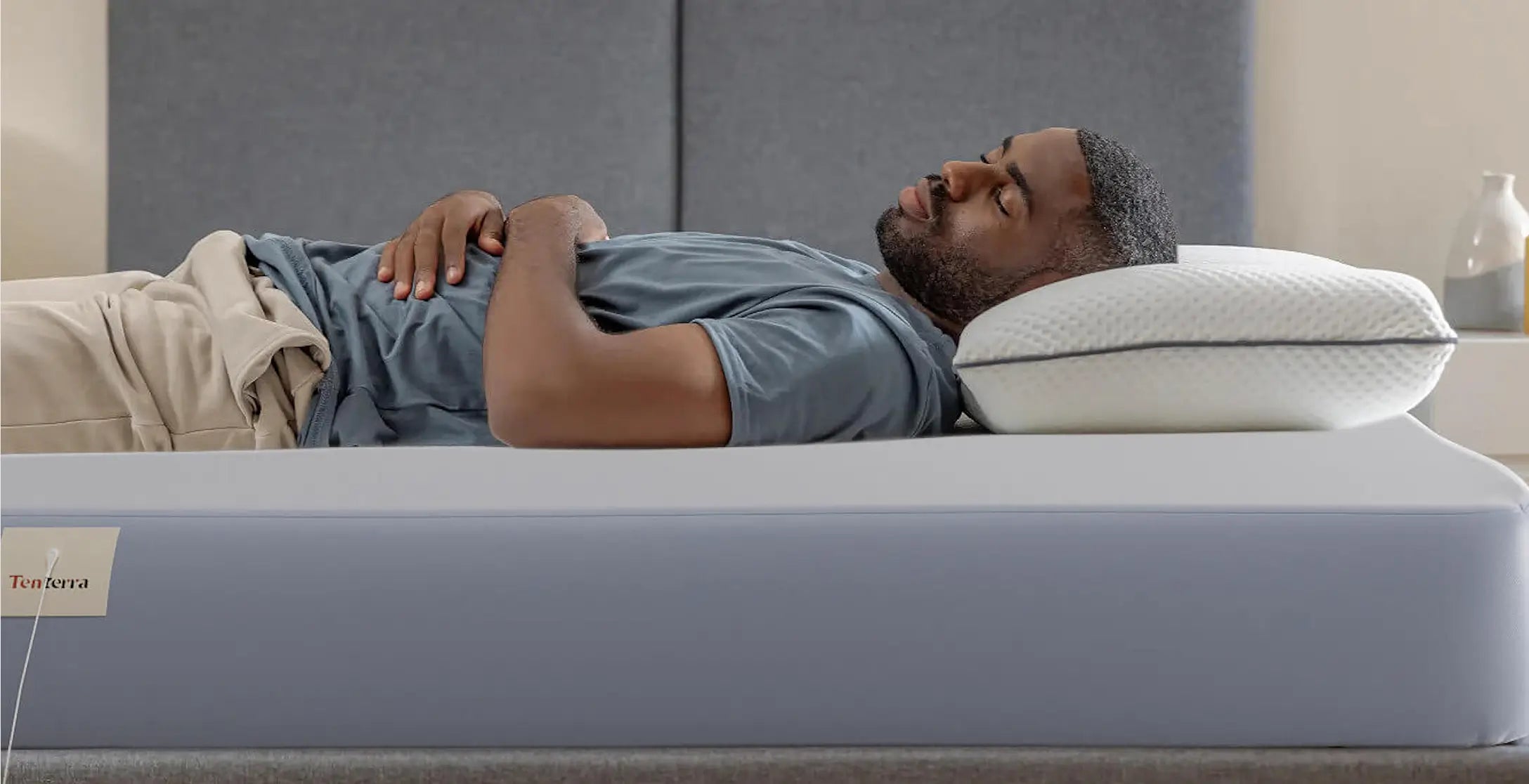
What is the best material for grounding sheets | Cotton vs. Bamboo vs. Tencel
Share
You wouldn’t wear a wool sweater to bed—so why settle for scratchy, overheating fabrics in your grounding sheets? The material your sheets are made from isn’t just about comfort; it determines how well they ground you, how long they last, and even how they impact your skin.
Most grounding sheets tout their silver percentage but ignore the elephant in the room: cheap, irritating fabrics. Cotton pills. Bamboo traps heat. Polyester feels like plastic. At Tenterra, we tested dozens of materials to find one that balances conductivity, comfort, and sustainability—without compromise.
Let’s break down why Tencel™ (our choice) outperforms cotton and bamboo in 4 key areas—and how the wrong material can sabotage your grounding experience.
Table of content
1. Conductivity: How Fabric Affects Grounding
Key Finding: Material impacts how well silver threads transfer electrons.
Tencel™:
- Smooth surface allows silver threads to maintain consistent contact with skin.
- Lab tests show 0.1-0.15 ohms resistance (optimal conductivity).
Bamboo:
- Rough fibers create “dead zones” where silver threads lose contact.
- Average resistance: 0.3-0.5 ohms (40% less efficient).
Cotton:
- Pilling over time disrupts conductivity.
- Resistance increases by 25% after 20 washes.
Science Backing:
- 2023 Textile Research Journal Study: “Smooth, moisture-wicking fabrics like Tencel™ optimize grounding efficiency by reducing air gaps between skin and silver threads.”
Ready to experience science-backed grounding? Explore Tenterra’s Tencel™ grounding sheets or dive deeper into our best grounding sheets guide.
2. Comfort: Nightly Wear Matters
Tencel™:
- Breathability: Regulates temperature 2x better than cotton (lab-tested).
- Moisture-Wicking: Pulls sweat away 50% faster than bamboo.
- Hypoallergenic: OEKO-TEX® certified—safe for eczema-prone skin.
Bamboo:
- Traps Heat: “Bamboo rayon” (used in most sheets) retains 30% more heat than Tencel™.
- Rough Texture: Can feel scratchy after repeated washes.
Cotton:
- Pilling: Creates friction points that irritate skin.
- Shrinks: Loses shape after 10-15 washes, disrupting silver alignment.
3. Durability: Built to Last
| Material | Washes Before Fraying | Conductivity Loss (50 Washes) |
| Tencel™ | 75+ | 2% |
| Bamboo | 30 | 35% |
| Cotton | 25 | 40% |
Why It Matters:
- “Cheap materials force you to replace sheets yearly. Tencel™ lasts 3x longer.”
4. Sustainability: Eco-Impact
Tencel:
- Made from sustainably harvested wood pulp (FSC® certified).
- Closed-loop process recycles 99% of water and solvents.
Bamboo:
- Often processed with toxic chemicals (like carbon disulfide) to create rayon.
- “Organic bamboo” is rare—most is greenwashed.
Cotton:
- Requires 2,700 liters of water per kilogram (vs. Tencel™’s 1,000 liters).
- Heavy pesticide use harms ecosystems.
For a full breakdown of what makes a grounding sheet effective (beyond material), see our Best Grounding Sheets of 2025


